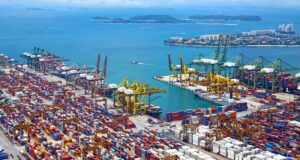“Countervailing” is a term that means to counterbalance or offset. In the context of international trade, countervailing duties, or CVDs, are special taxes placed on imported goods. These duties are used when a foreign government provides subsidies to its exporters, allowing them to sell their products at lower prices in other countries.
The main purpose of CVDs is to protect domestic industries from this kind of unfair competition. When foreign products are cheaper due to subsidies, it can be tough for local businesses to compete. By imposing CVDs, a country can raise the price of these imported goods, making it fairer for its own producers.
History of Countervailing Duties
Countervailing duties CVDs have been around since the late 19th century. They were first used to protect local industries from unfair competition due to foreign subsidies. The goal was to balance the market and ensure fair play for all.
A key moment in the history of CVDs was the Tariff Act of 1890 in the United States. Known as the McKinley Tariff, this act allowed the U.S. to impose duties on goods that were subsidized by foreign governments. It was one of the first steps in addressing unfair trade practices caused by subsidies.
As global trade expanded, there was a need for more detailed rules. This led to the Agreement on Subsidies and Countervailing Measures under the World Trade Organization (WTO). This agreement is part of the General Agreement on Tariffs and Trade (GATT) and sets out how countries can use CVDs.
The Agreement on Subsidies and Countervailing Measures defines what counts as a subsidy and how CVDs should be applied. It also outlines the domestic procedures that countries must follow when investigating subsidies. These rules help make sure that CVDs are used fairly and not just as a tool for protectionism.
Case Study of Countervailing Duties
The United States imposed CVDs on Spanish ripe olives. This decision was made because Spanish olive producers received subsidies from the European Union, which allowed them to sell olives in the U.S. market at lower prices. The U.S. government argued that these subsidies unfairly undercut American olive producers, leading to the imposition of CVDs as high as 27% on imports of Spanish olives in 2018. Despite some disputes at the World Trade Organization (WTO) regarding these duties, the U.S. decided to uphold the countervailing duties to protect its domestic olive industry and jobs associated with it (Source: U.S. keeps tariffs on Spanish ripe olives after WTO ruling, 2023)
Advantages of Countervailing Duties
CVDs have several advantages. They help protect domestic producers and industries from subsidized foreign goods. This can save jobs and support local businesses. CVDs also generate revenue for the government. This extra income can be reinvested in the economy.
Regulations
The World Trade Organization (WTO) has strict rules about CVDs. Countries must follow these rules to ensure fairness. Before applying and determining CVDs, a country must investigate. This investigation checks if foreign subsidies are harming local industries.
When can it be Applied?
CVDs can be applied after a thorough investigation. The investigation must show that subsidies from another country are causing damage to the local market. Without proof, CVDs cannot be imposed.
CVDs usually last for five years. After that, they are reviewed. If the need for protection continues, the duties can be extended. If not, they are removed. This ensures CVDs are only in place when necessary.
Countervailing Duties vs Tariffs vs Anti-Dumping Duties
Tariffs are taxes on imported goods. Countries use them to raise revenue or protect local industries by making foreign products more expensive. For example, a country might add a tariff on all imported electronics to support its local manufacturers.
Anti-dumping duties are another type of special tariff. They are used when a foreign company sells products at a price lower than what they charge in their home market. This practice is called “dumping.” It can harm local industries by undercutting their prices. Anti-dumping duties raise the cost of these unfairly low-priced imports to protect local businesses.
Here’s a quick breakdown:
- Tariffs: General taxes on imports. They protect domestic industries or raise revenue. Example: A 15% tariff on all imported cars.
- Countervailing Duties (CVDs): Imposed to offset foreign subsidies. They ensure fair competition by neutralizing the subsidy advantage. Example: A duty on imported steel that is subsidized by a foreign government.
- Anti-Dumping Duties: Applied when foreign products are sold below market value. They prevent unfair competition and protect local industries. Example: A duty on imported tires sold at prices lower than in the exporting country.
Here’s a simple table to summarize the differences:
| Type of Duty | Purpose | Issue Addressed | Example |
|---|---|---|---|
| Tariffs | Protect industries or raise revenue | General import protection | 15% tariff on all imported cars |
| Countervailing Duties | Offset subsidies to ensure fair competition | Foreign subsidies | Duty on subsidized imported steel |
| Anti-Dumping Duties | Prevent unfair pricing | Selling below market value | Duty on tires sold below home price |
How are Countervailing Duties Calculated?

Here’s a simplified explanation of how CVDs are typically calculated:
- Identify the Subsidy: The importing country looks at what subsidies the foreign government gives to its exporters. These could be cash payments, tax breaks, low-interest loans, or other financial help.
- Determine the Subsidy Rate: The government calculates the total financial benefit as a percentage of the product’s cost. For example, if the foreign government provides a $10 subsidy per chip, and the chip would normally cost $25, the subsidy rate is 40%.
- Calculate the Countervailing Duty: The importing country sets a duty to offset the subsidy. In this case, the countervailing duty is set at $10 per chip, matching the subsidy.
Example: Countervailing Duty for a Chip Manufacturer
Let’s consider a hypothetical scenario involving a foreign chip manufacturer.
Scenario:
A chip manufacturer in Country A receives government subsidies that allow it to sell chips at a lower price in Country B.
- Subsidy Details: The subsidy provided is $10 per chip.
- Cost Without Subsidy: Without any subsidy, the chips would cost $25 to produce.
- Subsidized Export Price: Due to the subsidy, the chips are sold in Country B for $15 each.
- Fair Market Price in Country B: Local producers in Country B sell similar chips for $25 each.
Calculation of CVD:
- Subsidy Amount: The subsidy per chip is $10.
- Subsidy Percentage: The subsidy represents 40% of the production cost without the subsidy ($10 subsidy on a $25 cost).
- CVD Rate: To counteract the subsidy, Country B imposes a CVD equivalent to the subsidy amount.
- Application of CVD: The CVD is $10 per chip, matching the subsidy amount.
- New Import Price: With the $10 CVD added to the $15 subsidized price, the chips now cost $25 in Country B.
By imposing a $10 countervailing duty, the price of the imported chips rises to $25. This matches the local market price in Country B. It removes the unfair price advantage that the subsidy created. As a result, local producers can compete fairly.
The goal of countervailing duties is to ensure fair competition. By matching the subsidy amount with a duty, the importing country raises the price of the imported goods to their true cost. This helps protect domestic industries from unfair pricing and maintains a balanced market.







